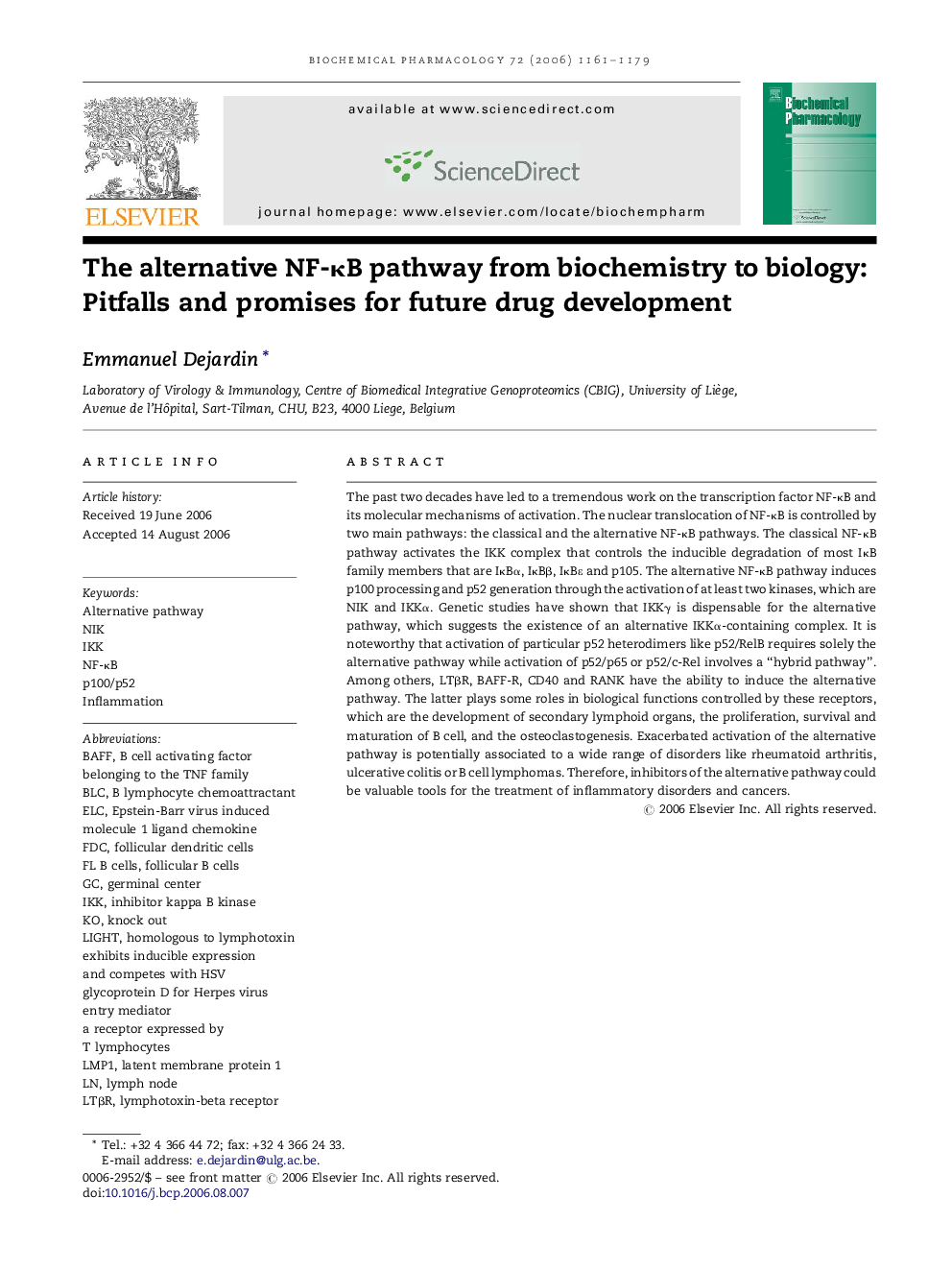| کد مقاله | کد نشریه | سال انتشار | مقاله انگلیسی | نسخه تمام متن |
|---|---|---|---|---|
| 2515365 | 1118514 | 2006 | 19 صفحه PDF | دانلود رایگان |

The past two decades have led to a tremendous work on the transcription factor NF-κB and its molecular mechanisms of activation. The nuclear translocation of NF-κB is controlled by two main pathways: the classical and the alternative NF-κB pathways. The classical NF-κB pathway activates the IKK complex that controls the inducible degradation of most IκB family members that are IκBα, IκBβ, IκBɛ and p105. The alternative NF-κB pathway induces p100 processing and p52 generation through the activation of at least two kinases, which are NIK and IKKα. Genetic studies have shown that IKKγ is dispensable for the alternative pathway, which suggests the existence of an alternative IKKα-containing complex. It is noteworthy that activation of particular p52 heterodimers like p52/RelB requires solely the alternative pathway while activation of p52/p65 or p52/c-Rel involves a “hybrid pathway”. Among others, LTβR, BAFF-R, CD40 and RANK have the ability to induce the alternative pathway. The latter plays some roles in biological functions controlled by these receptors, which are the development of secondary lymphoid organs, the proliferation, survival and maturation of B cell, and the osteoclastogenesis. Exacerbated activation of the alternative pathway is potentially associated to a wide range of disorders like rheumatoid arthritis, ulcerative colitis or B cell lymphomas. Therefore, inhibitors of the alternative pathway could be valuable tools for the treatment of inflammatory disorders and cancers.
Journal: Biochemical Pharmacology - Volume 72, Issue 9, 30 October 2006, Pages 1161–1179